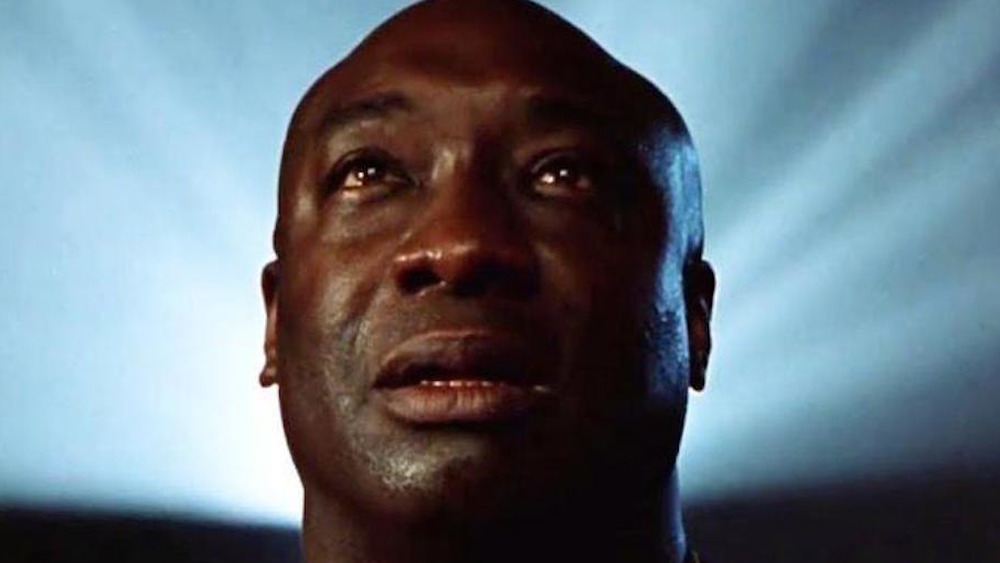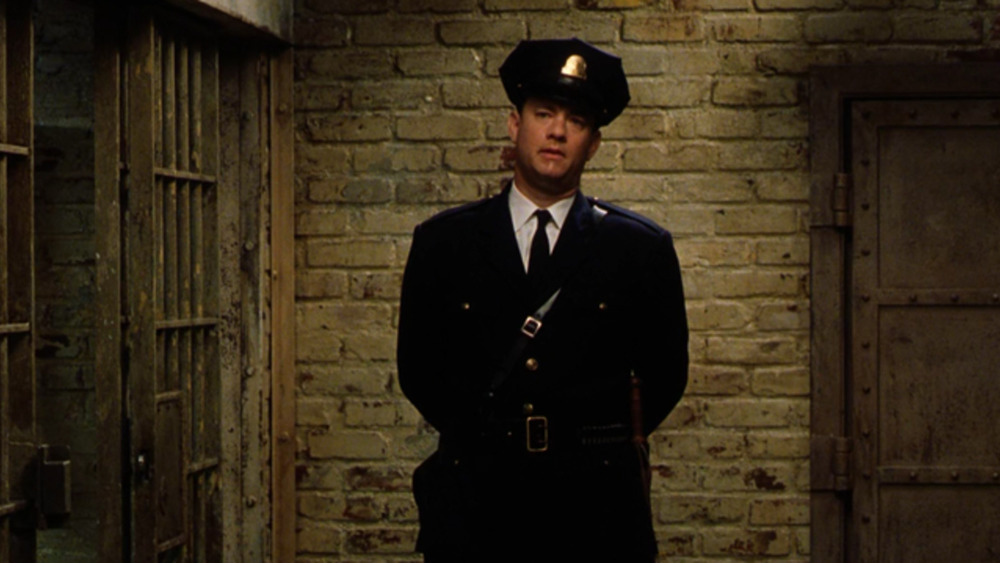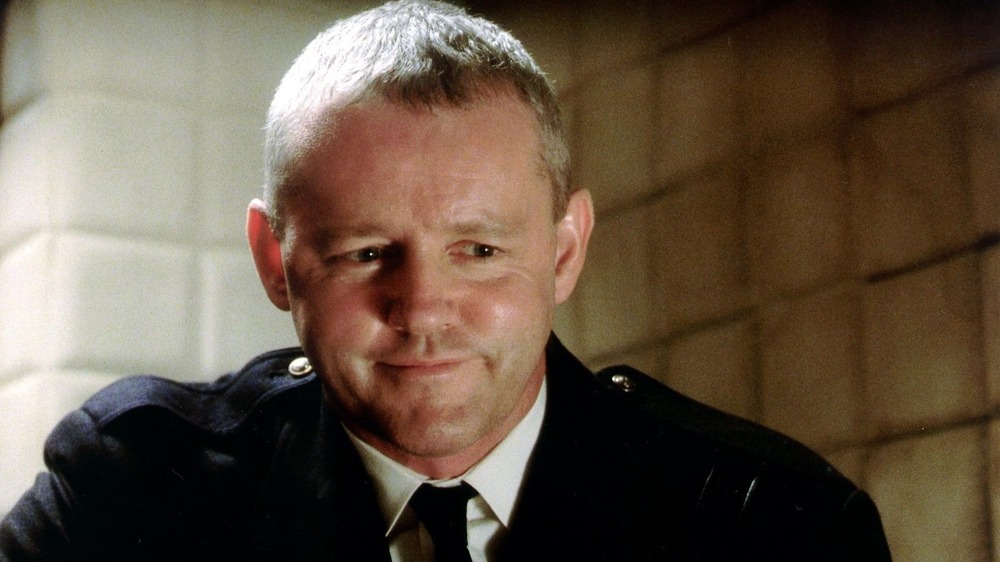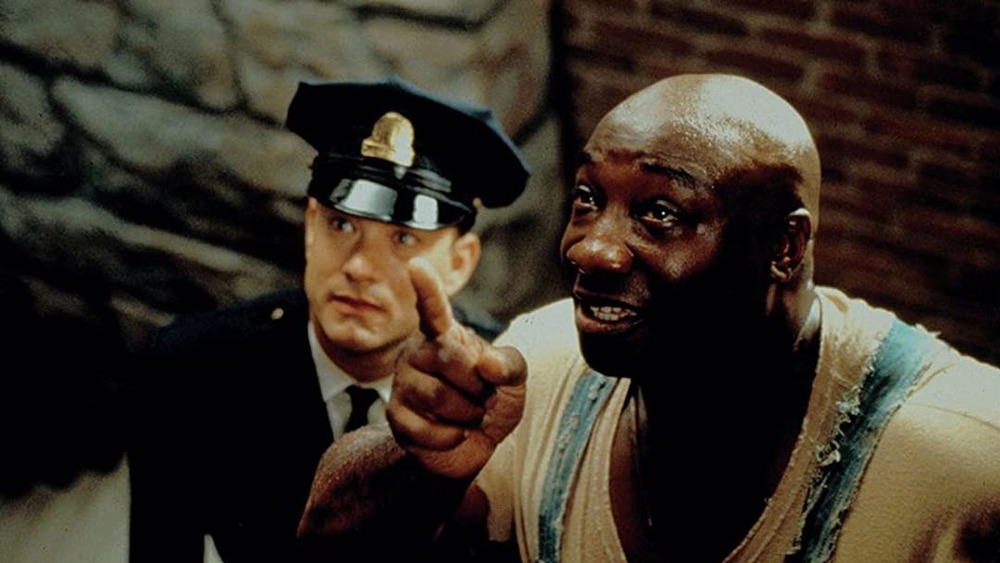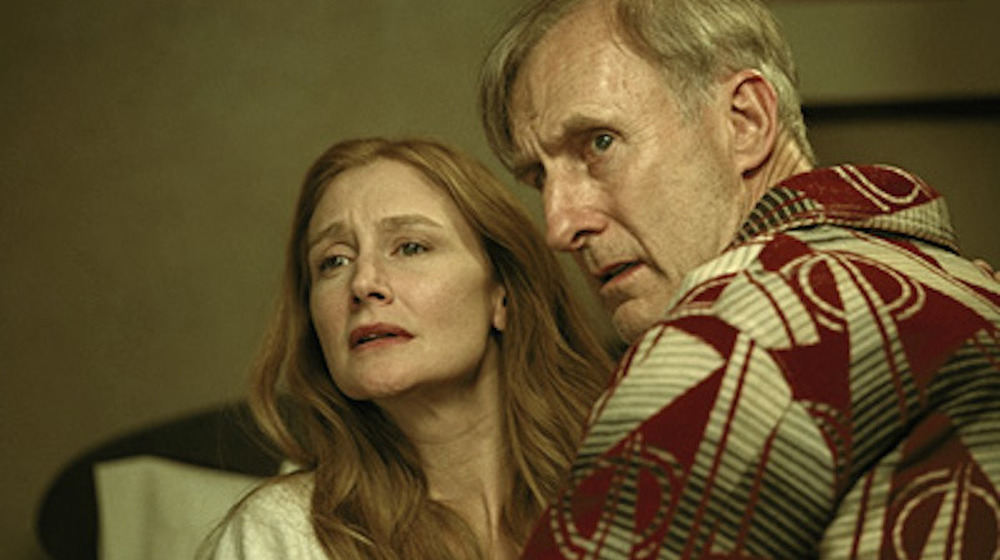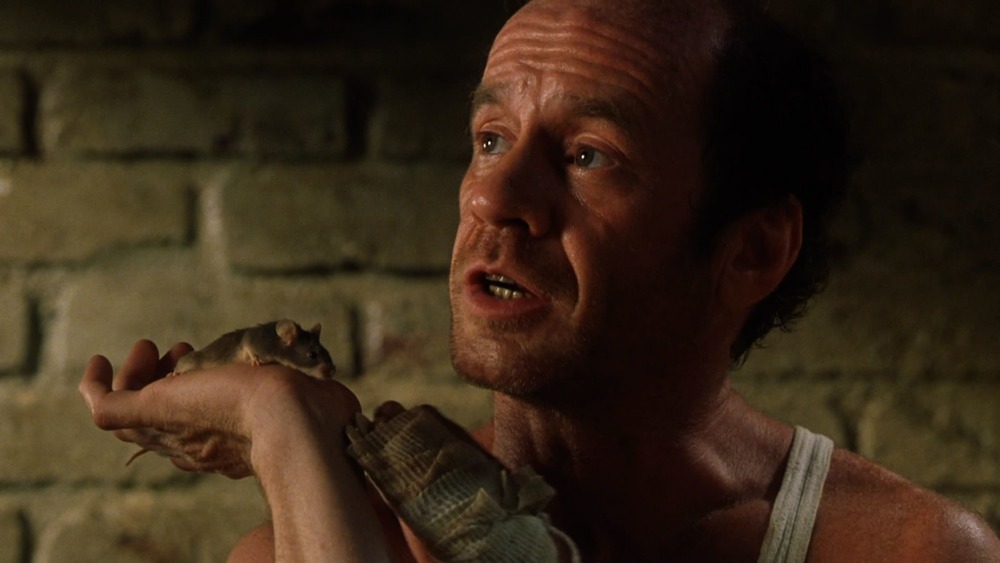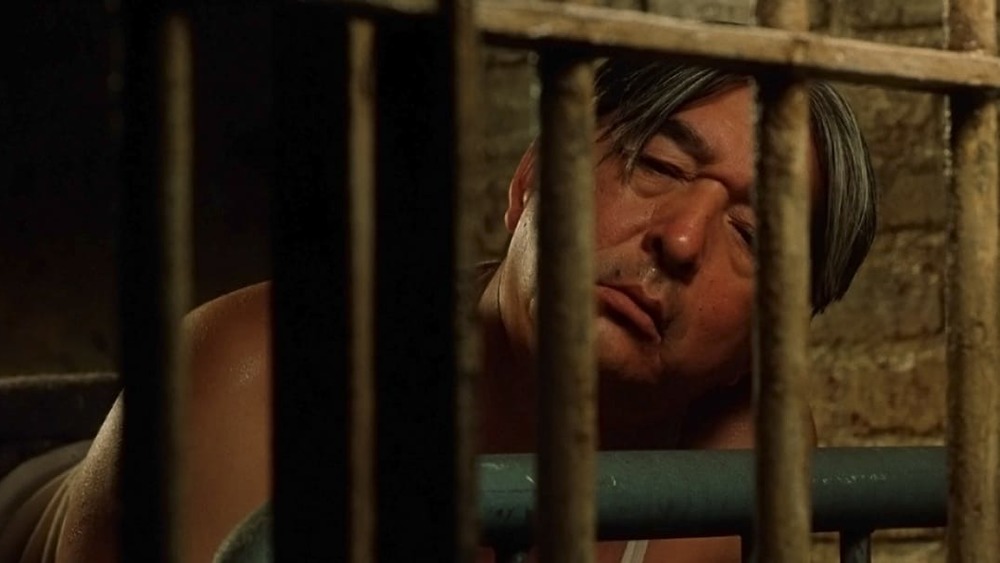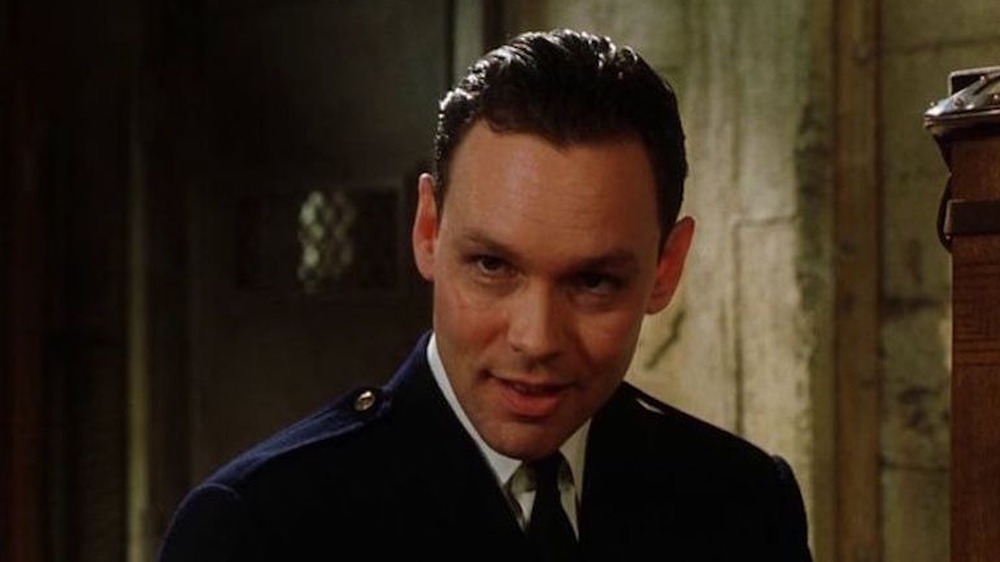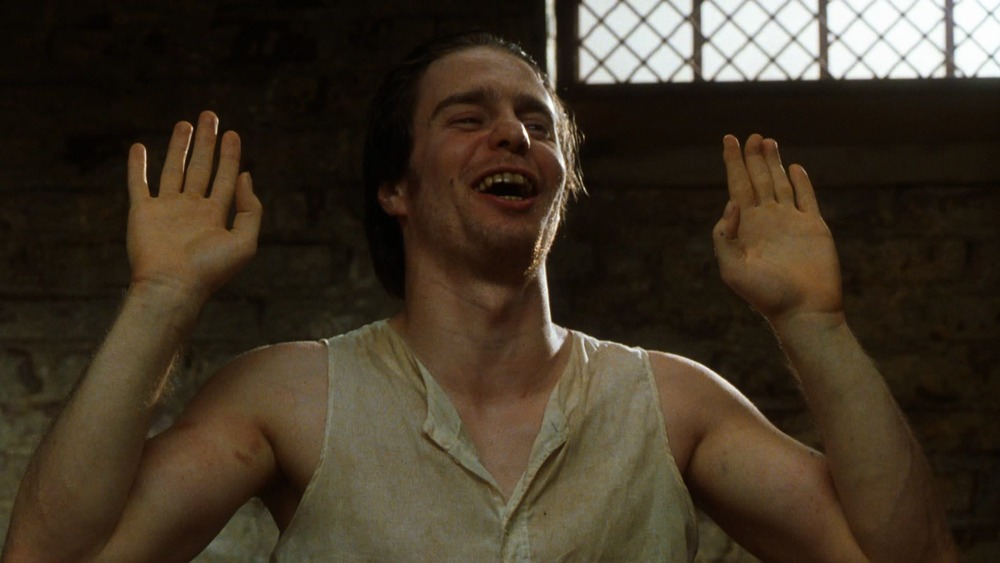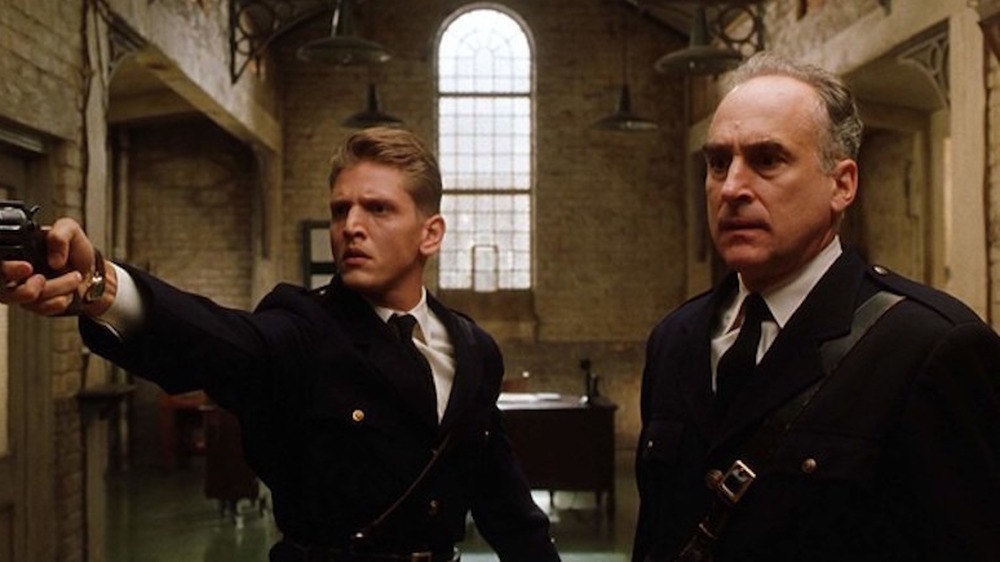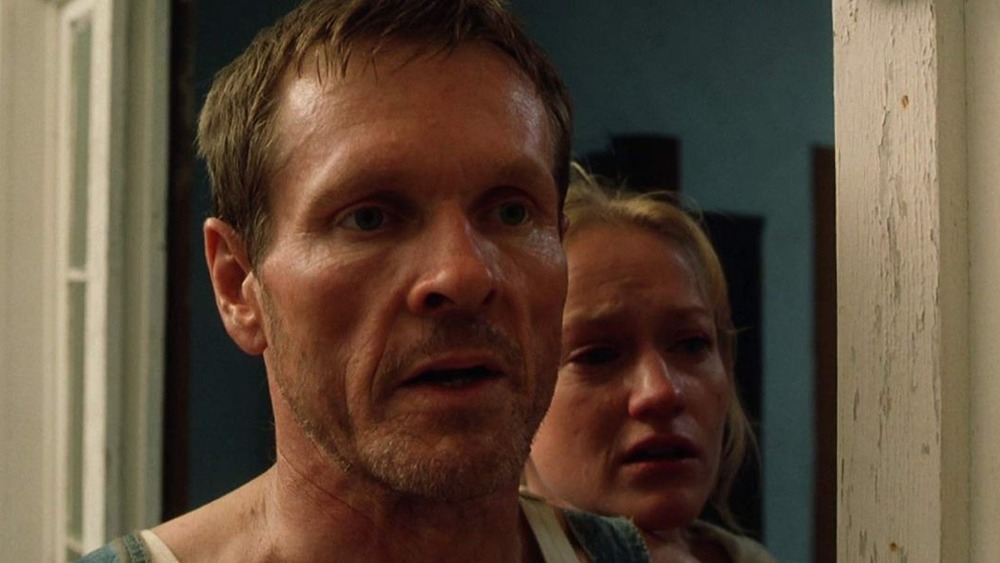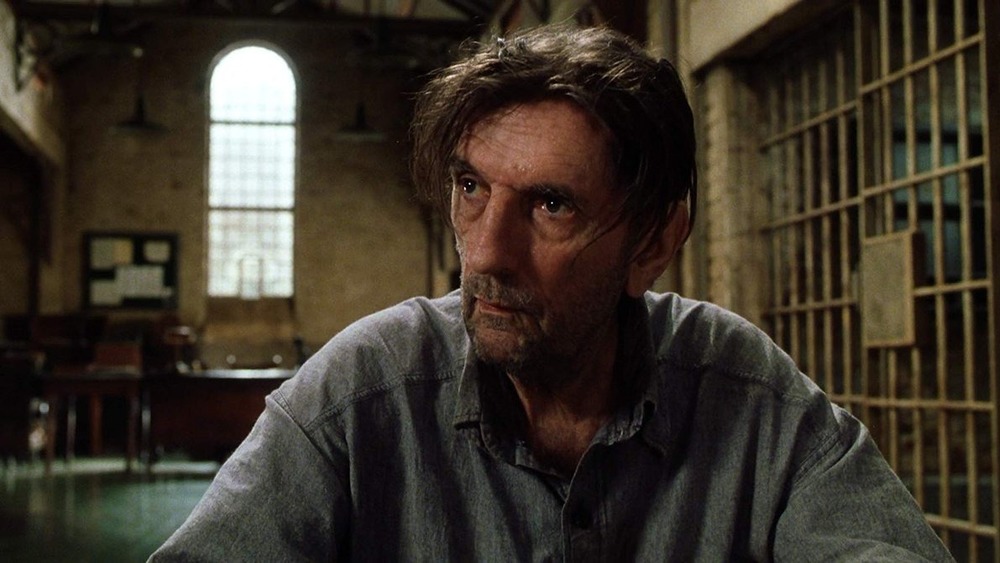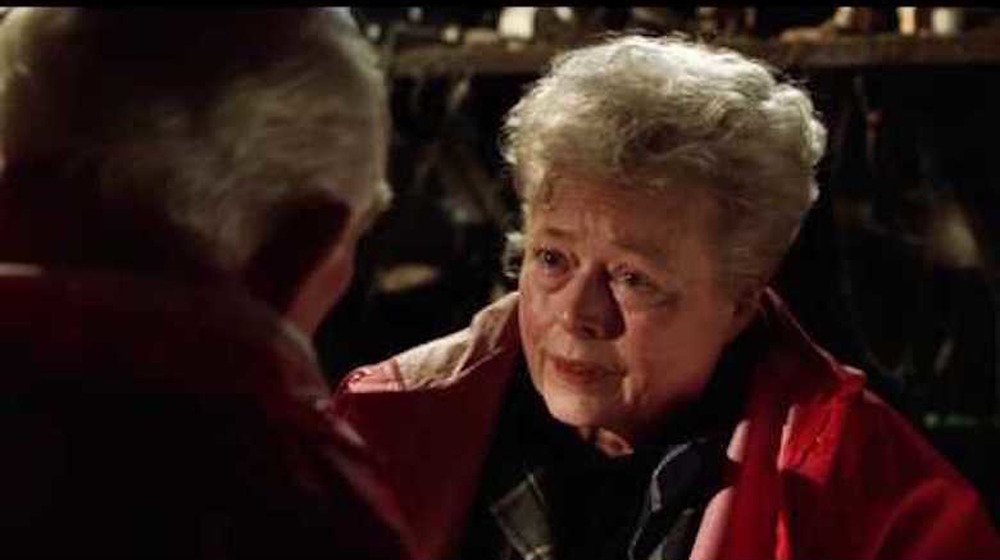How The Cast Of The Green Mile Should Look
Stephen King adaptations are famously difficult to pull off on screen, unless you're a King auteur like Frank Darabont. Darabont's translations of King's stories from book to celluloid are among the best, and The Green Mile is easily one of the most faithful. This supernatural story is a nuanced meditation on the death penalty, racism, and empathy that will bring even the stoniest cinephile to tears.
The Green Mile follows Paul Edgecombe (played by Tom Hanks in the film) and his crew of prison guards as they monitor men sentenced to death before their execution. Then, a strange accused murderer named John Coffey (Michael Clarke Duncan) arrives and changes everything. Because King's novel was originally published in six short chunks, it doesn't feature the sort of lavish character description the wordy author is well known for. However, that doesn't mean King doesn't give us some vivid glimpses of the folks walking around his story. This is how the cast of The Green Mile should actually look, according to the novel.
Paul Edgecombe
Since Paul Edgecombe narrates The Green Mile, we don't get much description of him. We know he's tall, wears a blue wool prison uniform at work, and rolls his own smokes. We eventually find out that he has blue eyes, and his colleague Bill Dodge jokes that Edgecombe is "big as life and twice as ugly," though he could just be joking. Edgecombe also has a large vein in his forehead that throbs when he's angry.
While this isn't a physical description per se, Edgecombe says about himself, "People don't always understand that being elegant isn't the same as being soft, and that's where I come in. I don't worry about being elegant. I just say things straight out." Tom Hanks perfectly brings this vibe to his performance of Paul Edgecombe. Older Edgecombe, played by Dabbs Greer in the movie, wears a rain poncho on his walks up the hill, as he does in the book. The book also describes the "brittle bones" in his hands, which Brad Dolan, an abusive orderly omitted from the film entirely, enjoys grinding between his cruel fingers.
Brutus "Brutal" Howell
Until John Coffey arrives on Cold Mountain's Prison Block E, Edgecombe's lieutenant, Brutus "Brutal" Howell, is one of the tallest men on the grounds. King writes, "Even Brutus Howell looked like a kid next to Coffey, and Brutal was over six feet tall and broad as well, a football tackle who had gone on to play at LSU until he flunked out." Despite his nickname, Howell takes great pride in his appearance and is remarkably kind. On execution days, he wears his hat placed firmly on his "big head" and his best blue suit, with polished buttons.
During an altercation between Howell and his colleague Percy Wetmore, Wetmore calls him a "big ape." Later, when their conflicts escalate to physical violence, Howell practically engulfs Wetmore's entire face in his large hands, squeezing his cheeks painfully. Howell also has a terrible habit of licking the lead of a pencil before writing with it. This detail isn't present in David Morse's performance, though his physical stature certainly matches the book's description. Like all of his colleagues, Howell is pale and tearful during John Coffey's execution.
John Coffey
When we first meet John Coffey, his huge frame is wrapped in chains "across his water-barrel of a chest." His legs are also in irons, which make a ruckus like "cascading coins." King describes John Coffey as a dark-skinned Black man who "stood six feet, eight inches tall." Even the biggest prison denims available land "halfway up on his bunched and scarred calves." Edgecombe muses, "My first thought was that he looked like a Black Samson ... only after Delilah had shaved him smooth."
King describes Coffey as having "strange eyes," with "a kind of peaceful absence in them, as if he were floating far, far away." Coffey's voice is "a deep and quiet rumble," and lacks the Southern accent he has in the movie. Coffey also cries all the time, "weeping silent tears ... like blood from a wound that can never heal." But when he smiles, it is sweet and innocent. Because of his constant crying, his eyes are also often described as bloodshot. This tearfulness is present in Michael Clarke Duncan's beautiful performance. However, in the book, Coffey's face turns a sickly shade of grey every time he heals someone. This doesn't happen on screen.
Warden Hal and Melinda Moores
In contrast to other Stephen King stories set in prisons, Warden Hal Moores (played by James Cromwell in the movie) is a good man. So much so, in fact, that the guards risk their jobs to help him and his wife Melinda (Patricia Clarkson). Warden Moores is described in the book as being 58 or 59, "with a deeply lined bloodhound face ... He had white hair and his hands shook with some sort of palsy, but he was strong." His hands have liver spots on them, and his eyes often look sick, thanks to the stress of his wife's inoperable brain tumor.
When we finally meet Melinda in the book, she has been ravaged by her illness. "Her face had fallen away to show the shape of the underlying skull," Edgecombe details, "and her skin was as white as parchment. There were dark circles under her eyes." Melinda also speaks in an "old and rusty" voice. Her eyes are "woeful, sad, and distant. Dying eyes." Just before her healing, she is described as looking "like a sick child got up as a Halloween witch," her skin a "hanging dough of wrinkles." All of this reverses after John Coffey heals her — her white hair even returns to its original black. Almost none of this matches Clarkson's red-haired Melinda. She does look haggard, but not nearly as dramatically as she does in the book.
Eduard Delacroix and Mr. Jingles
Eduard "Del" Delacroix is "a slight, balding man with the worried face of an accountant who knows his embezzlement will soon be discovered." Michael Jeter portrays this perfectly in the film adaptation. In the book, Del is a pedophile and murderer who has become "a mild-mannered man with a worried face, a bald pate, and long hair straggling over the back of his shirt collar." When we first meet Del in the movie, Percy Wetmore breaks his fingers with his baton, but this doesn't happen in the book. However, Del's death scene in the book happens exactly as it does on screen.
Notably, Del has a pet mouse. In King's book, he is initially named Steamboat Willie, in reference to the early Mickey Mouse cartoon, before Del changes his name to Mr. Jingles. Mr. Jingles is a small brown mouse with a long pink tail, "perfectly ordinary," with "little dark drops for eyes" often described as "oilspots." In both the book and the movie, Mr. Jingles plays tricks with an empty spool of thread. After Wetmore kills Mr. Jingles, he has a limp in his left leg that doesn't make it into Darabont's screen version. By the end of the book, the 64-year-old mouse has turned fully gray, but still loves to play with the spool of thread.
Arlen Bitterbuck
While Paul Edgecombe notes a number of different executions he's overseen, Arlen Bitterbuck's is the first that readers experience from start to finish. Bitterbuck is called "the chief" by the guards, because he's a Cherokee man from the Washita Reservation. He has long "iron-gray" hair that falls well past shoulders, which were once muscular. He wears a pair of "saggy-seated" boxer shorts and nothing else as he smokes hand-rolled cigarettes. In the book, we find out that Bitterbuck is on death row because he killed a man in a drunken bar brawl.
Before his execution, Bitterbuck's oldest daughter carefully braids his long hair, ignoring the shaved circle up top where the wet sponge of the electric chair will attach. As he's being set in the chair, "he took one of the braids his daughter made and kissed it." The execution chars one of those braids into blackness. As played by Oneida actor Graham Greene in Darabont's movie, Bitterbuck presents very differently. Most notably, he has short gray hair instead of long braids.
Percy Wetmore
Block E's resident sadist is Percy Wetmore, who is played by Doug Hutchison in the film. Wetmore is first described by King as looking like a small child next to John Coffey's enormous frame. He's "a banty-rooster sort of guy, the kind that likes to pick fights." He is also "vain about his hair. Could hardly keep his hands off it." Wetmore carries a hickory baton in a custom-made holster. He is described as clumsily practicing pulling it out as if it's a gun.
When Wetmore gets angry in the book, his face turns bright red, he bares his teeth in a "strained grimace," and the veins in the side of his neck bulge with rage. He has blemishes on both his cheeks, and often sports a contemptuous grin. King's book also describes Wetmore as rather effeminate in spite of all his bluster, commenting that his hands are "soft and white and small, the hands of a girl in her early teens." After John Coffey gives "bad man" Wetmore all of Melinda Moores' cancer, he goes slack and catatonic, just as he does in Darabont's adaptation.
William "Wild Bill" Wharton
While most Block E prisoners don't cause problems, William "Wild Bill" Wharton bucks the trend. Played by celebrated character actor Sam Rockwell, Wharton is as disturbing on screen as he is on the page. In the book, Wharton is 19 years old. King describes him as a "scrawny man with a narrow, pimply face and a lot of long, tangly blond hair." He has long fingers, greasy hair, "blazing blue eyes," "a set of blackening, dying teeth with several gaps among them already," and "the face of an animal — not an intelligent animal, but one filled with cunning." He also has a tattoo of the words "Billy the Kid" on his left forearm. This tattoo moves to his bicep in Darabont's film.
The guards of Block E often call him their "problem child," especially as he can't keep his junk in his pants and attempts to sexually assault Percy Wetmore. In the novel, Wharton has a habit of faking seizures and fits, but in the movie, he plays catatonic. The only normal thing about Wharton is his laugh: It's "a good laugh, a country laugh, cheery and deep." It almost makes this murdering pedophile monster sound like a human being.
Dean Stanton, Harry Terwilliger, and Bill Dodge
Edgecombe's colleagues include Dean Stanton, who is played by Barry Pepper in the movie. He wears a pair of rimless glasses that he cleans and polishes compulsively (and often furiously) throughout the book, especially when he's stressed out or nervous. They have left the skin around his nose red and pinched. This detail was omitted from Darabont's movie. After Wharton tries to strangle Stanton with his chains, Stanton sports wicked bruises on his neck for some time, which fade from black to purple to yellow.
Harry Terwilliger (Jeffrey DeMunn) is another guard, habitually described as skinny. He looks like a child when walking alongside John Coffey. But Terwilliger is also described as muscular and strong, with "the muscles of a man who spent most of his spare time plowing and chopping." After Wetmore botches Del's execution, Terwilliger gets sick: "His cheeks were paper-white and his lips were purplish, as if he'd been eating blackberry cobbler."
Bill Dodge (Brent Briscoe) is only described as having a rumbly voice and being shorter than Edgecombe and Howell. He is constantly telling people to look on the bright side of life, a tic that annoys his colleagues.
The Detterick family
Consisting of five members — Klaus, Marjorie, Howard, Cora, and Kathe — the Detterick family is the reason John Coffey is in jail. Coffey is accused of unspeakable crimes against twin sisters Cora and Kathe. They are described in King's book as having had "fluffy heads of blonde hair" and "engaging Bobbsey Twins smiles." Kathe wore yellow sleeping shorts and a matching yellow top, while Kathe's outfit was white. In the movie, both girls are wearing dresses when they are found with John Coffey, but in the book, they are both naked and horribly bloody. "Their hair wasn't blonde anymore," the book details, "It was auburn. Blood had run down their cheeks out of it like it was a bad dye-job, and you didn't have to be a doctor to see that their fragile skulls had been dashed together."
Played by William Sadler in the movie, Klaus, the Detterick family patriarch, is described as wearing black work boots and carrying a hunting rifle. When attending Coffey's execution, he is described as looking like an old man, despite the fact that he's only 39. His nose starts bleeding from the stress of everything. Marjorie is also described as looking elderly, even though she's significantly younger than Klaus.
Toot-Toot
In King's novel, Toot-Toot is a prisoner from another block who pushes the food and snack cart to all the different wards. He also stands in for execution rehearsals, bringing levity to a dark ritual in both the book and the film. In the book, King notes that Toot-Toot has a "sunken grin doing unpleasant things to the soft and toothless lower half of his face," and that he has a "particularly unpleasant smile." He sports "wispy white hair" and has a cackle of a laugh. His twinkling eyes "never looked so alive as when he was playing dead."
Toot-Toot has gnarled hands that he places in prayer formation while pretending to be on his way to the execution chair. He also has a wicked sense of humor: Toot-Toot's monologue about his final wishes, including his R-rated thoughts about Mae West, are translated faithfully into the film. Toot-Toot is portrayed by cinema legend Harry Dean Stanton, who captures the character perfectly. There is only one major difference between the two depictions of Toot-Toot: Stanton sports dark hair in the role, while the book describes the character's coif as white.
Elaine Connelly
Paul Edgecombe's wife Janice is barely described, beyond the fact that Paul believes her to be one of the most beautiful women he's ever seen. But this isn't the case with Elaine Connelly, the "special friend" of his nursing home years. In King's book, Elaine Connelly is described as "tall and slim, still erect and clear-eyed, very intelligent and refined." She has hip troubles and arthritis in her hands, "but she has a beautiful long neck — a swan neck, almost — and long pretty hair that falls to her shoulders when she lets it down."
Connelly has "long and beautiful fingers" (albeit with "bunched ugly knuckles") and hazel eyes, "the left slightly dimmed by the mist of a coalescing cataract." Her eyes often feature a "dull pain" from her various ailments, but she also has a youthfulness about her. Paul describes her as having an "imp's smile," which looks "strange and absolutely wonderful on her too-gaunt, pain-haunted face." She kisses Paul above his eyebrow the same way that Janice used to do, though she doesn't know about that. Over the course of the book, she wears a blue and white dress, jeans that show off her long legs, and a blue ribbon in her hair. As played by Eve Brent in the movie, Elaine Connelly couldn't look more different from the book's description: She is notably short, and wears her curly hair pinned up.
